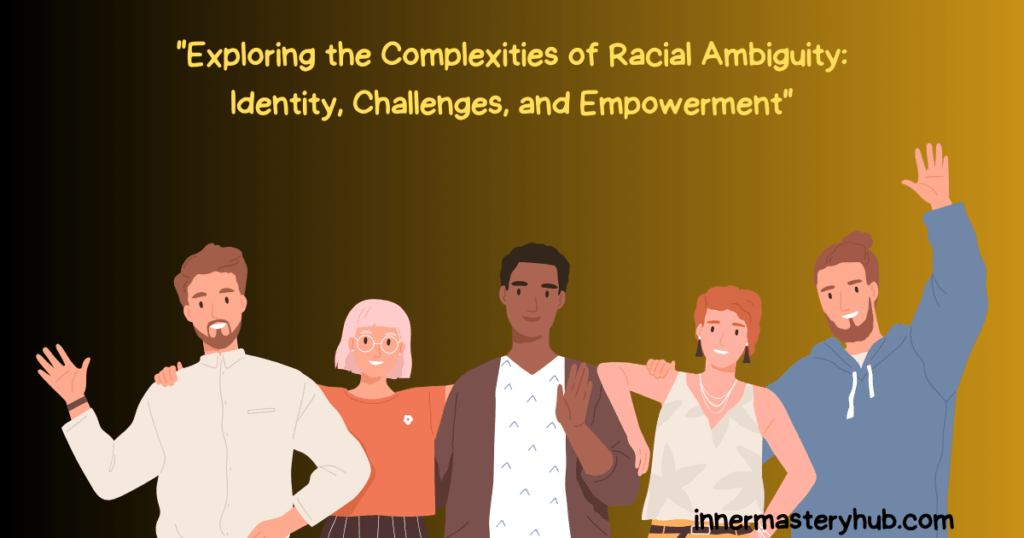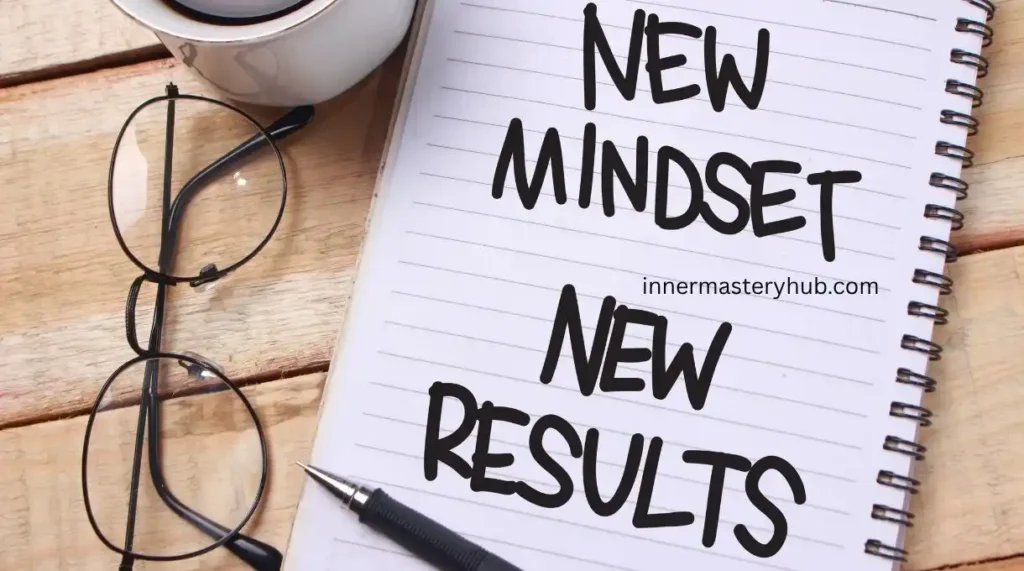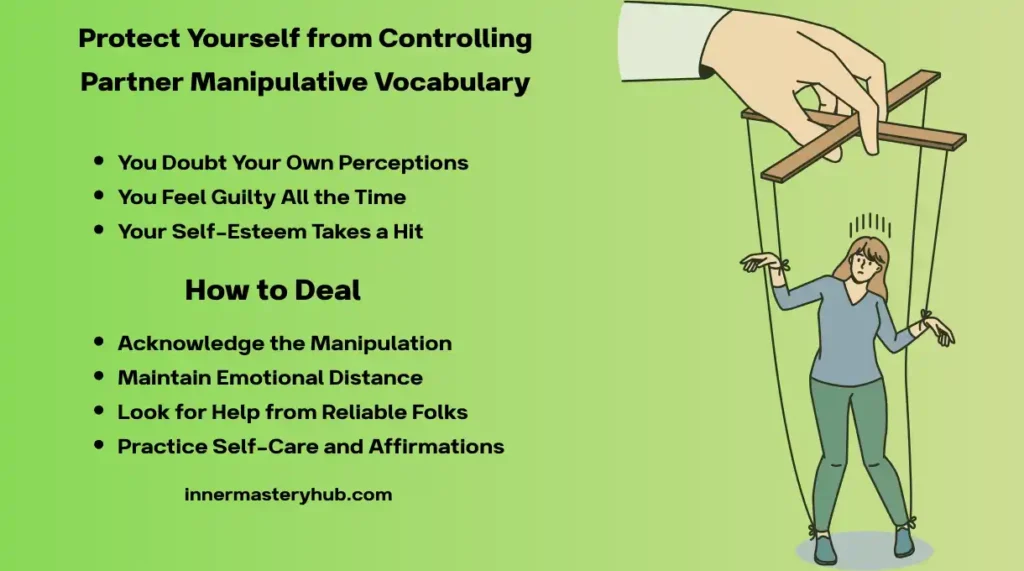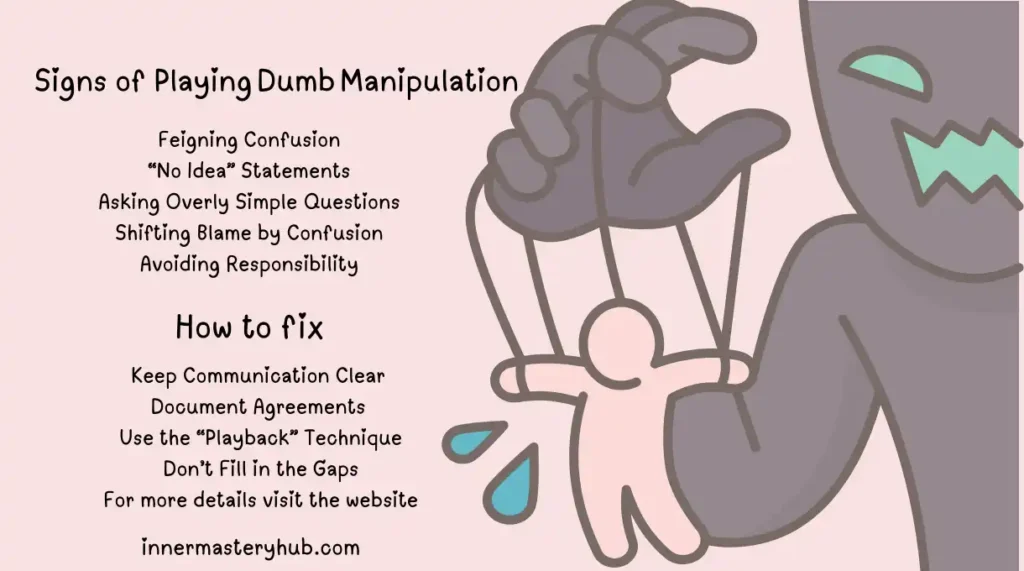Racial Ambiguity: 12 Empowering Identity Hacks for Real Belonging

Mixed-race people, or those with racial Ambiguity, are individuals who are perceived as belonging to multiple racial or ethnic groups. It is a valuable aspect of our multicultural world, and it can be a complex experience.
Racially ambiguous individuals face specific challenges. They could face harassment, discrimination, or stereotypes due to their looks. Moreover, even if they don’t have a strong bond with either race, they could experience pressure to identify with one over the other.
There are many benefits to being racially ambiguous, despite the difficulties. Individuals with racial Ambiguity can often transcend cultural barriers and possess a unique perspective on the world. Additionally, they could be more tolerant and open-minded.
What is Racial Ambiguity?
The experience of being seen as belonging to more than one race or ethnic group is known as racial Ambiguity. This may be the result of one’s appearance, heritage, or cultural upbringing. Many experiences, both good and bad, can result from racial Ambiguity.
On the one hand, people of mixed races could be perceived as more exotic or appealing. They may also have the opportunity to encounter and learn about other cultures. People of mixed races, however, could experience prejudice or discrimination from others. They might also believe that they are not part of any one race.
Racial Ambiguity is not a binary problem. The experiences of people of mixed races can be very diverse. While some may feel more at odds with their racial identity, others may feel more at ease.
Here are some examples of racial Ambiguity:
- A person who is half Black and half white may be perceived as Black and white by others.
- A person who is half Asian and half Hispanic may be perceived as being Asian by some people and Hispanic by others.
- A person who is Native American and white may be perceived as being Native American by some people and white by others.
Why Racial Ambiguity Is An Experience That We Should Be Aware Of
We should be aware of racial Ambiguity, as it is a distinct and significant aspect of the human experience. It is crucial to show empathy and support for those who are racially ambiguous because they frequently confront particular difficulties and experiences.
A significant advantage of being racially ambiguous is that one often has a thorough understanding of multiple cultures and viewpoints. The propensity of these individuals to question conventional ideas of race and identity may positively impact change.
Discrimination and prejudice can stem from racial Ambiguity. Both the majority and minority groups to which these individuals belong view them as outsiders. Emotional suffering, feelings of loneliness, and uncertainty might result from this.
The Challenges Racially Ambiguous People Face
Racially ambiguous people face many challenges, including:
- Discrimination and prejudice. Members of both the dominant and minority groups may discriminate against racially vague individuals. There are several possible causes for this, such as racism, colorism, and xenophobia.
- Identify confusion. Racially ambiguous individuals may feel as though they do not belong to a single racial category, which can lead to identity uncertainty. Feelings of loneliness, isolation, and uncertainty may result from this.
- Tiny-scale hostility. Microaggressions, which are imperceptible and frequently inadvertent manifestations of racism, can occur among racially ambiguous people. Because microaggressions can be upsetting and invalidating, it can be hard for racially ambiguous persons to feel confident in themselves.
- Stereotyping. Racially ambiguous people may be stereotyped by others. This may result in misunderstandings regarding their experiences, background, and culture.
- Insufficient representation. The media and other popular culture outlets frequently underrepresent those who identify as racially ambiguous. As a result, they may struggle to recognize themselves in the world.
- Intersectionality. Experiences become more complex when racial Ambiguity interacts with other facets of a person’s identity, such as gender or socioeconomic background.
What are the Privileges Of Looking Racially Ambiguous?
There are a few privileges that racially ambiguous people may experience.
- People could think they’re more exotic or appealing. This is because many racial groups may find some of their qualities appealing. An individual who is half Asian and half White, for instance, can have the almond-shaped eyes of an Asian and the fair skin and hair of a White person. Both white people and Asians may find this mix of traits appealing.
- They may have the chance to encounter and learn about various cultures. It might be possible for persons who are racially ambiguous to grow up in a home that values several cultures. This can be a worthwhile experience that helps kids gain a profound awareness of various lifestyles.
- They could establish connections with individuals of various racial backgrounds. Racially ambiguous people might feel more at ease engaging with members of other racial groups because they don’t feel like they fit into any particular group. Since it enables them to establish connections with a broader variety of individuals, this can be a highly beneficial asset.
Some ways to support racially ambiguous people
Here are some ways to support racially ambiguous people:
- Recognize your preconceptions and biases. Although everyone has prejudices, it is crucial to recognize them to confront them.
- Show consideration for the racial identity of others, regardless of it. Please refrain from assuming someone’s race just on their appearance.
- Defend against discrimination and racism. When you witness someone being discriminated against, speak up and spread awareness of the value of racial equality.
- Make the world a more hospitable and inclusive place for everyone. Supporting laws and programs that advance racial inclusion and fairness is one way to do this.
How to Strive as Racially Ambiguous People in a Society
Embrace your identity openly.
Accept your mixed or ambiguous heritage proudly. Speak your truth when asked. Owning your identity builds confidence, reduces shame, and sets a foundation for inner strength. Clarity about who you are helps others respect your boundaries and view you with authenticity.
Find affirming communities
Seek groups—mixed-race, multicultural, or inclusive—where people understand ambiguous identities. Sharing stories reduces isolation. Supporting others builds connections. Belonging among people with similar experiences validates you, providing comfort and strength that you can’t always find alone.
Educate others kindly
When someone asks, “What are you?” take it as a chance to teach. Share your background without needing validation. Use simple, calm language. Educating changes perception and helps others see beyond appearance. Over time, ignorance gives way to respect.

Build self-awareness through reflection.
Journal, meditate, or discuss your feelings about identity with friends. Understand what you value, what hurts, and why. Processing mixed emotions helps you strengthen self-understanding, making your core identity stable even when others misjudge or question you.
Set boundaries on intrusive questions.s
Not every question deserves an answer. Politely but firmly refuse invasive requests about your race, ancestry, or family. Saying “I prefer not to discuss that” is okay. Boundaries protect your emotional health and teach respect.
Use your Ambiguity as a strength.
Racial Ambiguity lets you navigate multiple cultures and perspectives. Use that to build empathy, adaptability, and cultural fluency. Your ability to cross boundaries is a gift in relationships, work, and creative expression.
Find role models & mentors.
Look for people who share similar ambiguous identities or multicultural backgrounds. See how they handled challenges, celebrated differences, and stood firm. Mentors inspire, guide, and help you imagine paths that feel possible for you.
Express yourself through art or culture.
Use art, writing, dance, music, or fashion to tell your mixed story. Creative expression helps others see your identity and enables you to make sense of it. Sharing your art connects you to audiences who feel understood and respected.
Cultivate resilience to hurtful remarks.s
People may say insensitive things—even unintentionally. Develop mental tools: pause, breathe, reframe, respond, or take a walk. Don’t internalize ignorance. Remind yourself others’ limited views don’t define your value.
Learn your ancestry and history.
Research your family roots, traditions, languages, and cultures. Knowing where you come from gives you a connection, pride, and deeper foundations for your identity. History creates a bridge between heritage and self in ways external appearance cannot.
Advocate for inclusion in institutions.
Push for more inclusive school, workplace, and media policies that recognize mixed and ambiguous identities. Advocate for census options, anti-bias training, and inclusive representation. Change systems so future ambiguous people feel seen, respected, and validated.
Celebrate the journey, not just the outcome
Identity is evolving. Accept that you may feel fluid or shift over time. Celebrate progress, small victories, and self-acceptance. Growth is a lifelong journey—every step, whether it involves clarity, community, or courage, matters.
FAQS About Racial Ambiguity
How do people who are single race experience racial Ambiguity?
When dealing with people of different races, people who fall under a single racial categorization may yet suffer racial Ambiguity. They may find it challenging to comprehend or react to someone’s identity when it deviates from conventional societal expectations, which could result in misunderstandings or inquiries about their origins.
The toll of racial Ambiguity?
For those who are racially ambiguous, the consequences of racial Ambiguity include identity issues, ongoing doubt, and psychological distress. They may experience prejudice, stereotypes, and microaggressions, which can impact their sense of self-worth, sense of community, and access to opportunities and resources.
Physical features of multiracial populations or racially ambiguous faces?
The varied genetic backgrounds of multiracial communities result in a wide range of physical characteristics. Combinations of traits from several racial or ethnic groups, such as skin color, black hair, curly hair texture, light complexion, and features associated with Black women, as well as eye shape, may be observed in them. People who belong to the multiracial category are distinct and represent their mixed heritage due to their varied physical traits.
How does racial Ambiguity affect personal identity?
Racial Ambiguity makes personal identity more complicated. People may struggle to define themselves when others constantly question or mislabel them. This can lead to confusion, but also self-awareness. Many learn to embrace multiple cultures and develop flexible, unique identities that go beyond traditional racial categories.
What psychological effects come from being racially ambiguous?
Being racially ambiguous can bring both pride and stress. Some feel confident and adaptable in different groups, while others face confusion, anxiety, or loneliness. Repeated questioning about their background can be exhausting. Still, many develop strong emotional resilience and learn to navigate diverse environments with empathy and understanding.
How do racially ambiguous people experience discrimination?
Racially ambiguous people can face discrimination from different sides. Some are excluded for not “fitting in,” while others experience microaggressions or stereotypes. Their treatment may change depending on how others see them. This unpredictable bias can make them feel invisible, misunderstood, or pressured to” choose” one racial identity.
What is “racial identity confusion”?
Racial identity confusion happens when someone is unsure how to define their race. This often occurs because society’s labels don’t match how they see themselves. Family, culture, and appearance may send mixed signals. Over time, many people resolve this confusion by forming their own clear sense of identity.
How does racial Ambiguity influence self-esteem and belonging?
Racial Ambiguity can influence self-esteem in different ways. Feeling accepted and understood boosts confidence, while rejection or misidentification can lower it. Belonging to supportive communities helps racially ambiguous people feel secure. Acceptance of their mixed or unclear identity often leads to stronger self-worth and emotional well-being.
How does racial Ambiguity affect identity?
Racial Ambiguity affects identity by making people question where they belong. When others struggle to identify someone’s race, it can lead to confusion or pressure to explain themselves. Over time, many learn to accept their mixed background, creating a strong, personal sense of identity that doesn’t depend on society’s categories.
Is racial Ambiguity more common now?
Yes, racial Ambiguity is more common today because of increasing interracial relationships and global migration. As cultures mix, more people have features that don’t fit traditional racial categories. Modern societies are also becoming more accepting of diverse appearances, so racially ambiguous individuals are more visible and proudly embracing their identities.
How does racial Ambiguity influence how others perceive you?
Racial Ambiguity influences how others perceive you by making them uncertain about your background. People may guess your race based on appearance, leading to stereotypes or curiosity. Some might treat you differently depending on what they assume. This uncertainty can cause both positive interest and confusing or unfair social experiences.
Do racially ambiguous people face discrimination?
Yes, racially ambiguous people often face discrimination. They may experience prejudice from multiple groups or feel excluded for not fitting clearly into one race. Others might question or stereotype them. This can cause confusion and emotional stress; however, some individuals also use these experiences to build resilience and understanding across cultures.
Can someone appear racially ambiguous yet be of a single race?
Yes, someone can appear racially ambiguous but belong to a specific race. Genetics, family traits, and regional diversity can make a person’s appearance different from common racial expectations. People may assume they’re mixed or from another background, even when they’re not. This often leads to curiosity, misunderstanding, or mistaken identity.






